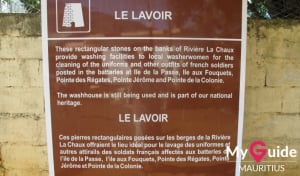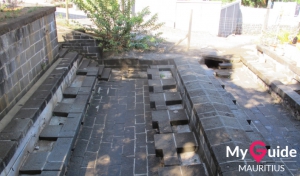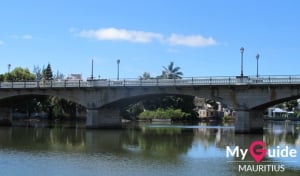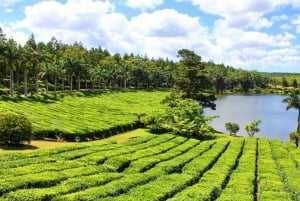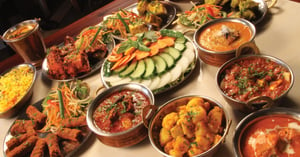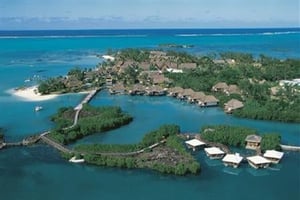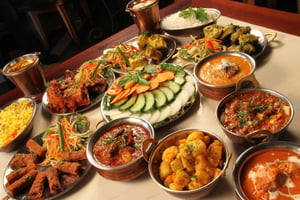Mahebourg
The village offers a beautiful scenery of mountains, islands (like the ‘Mouchoir Rouge) and its blue lagoon is simply breathtaking, it is no coincidence that the public beach near Mahebourg is named Blue Bay
Mahebourg (pronounced as my-boor) is a coastal village in the South East of the island situated in the district of Grand Port. Located on the shores of the island’s biggest and richest lagoon, it is one of the most popular villages in the South. It is at only 10 minutes drive from the airport.
What makes it unique is the blend of colonial and creole architecture. The village offers a beautiful scenery of mountains, islands (like the ‘Mouchoir Rouge) and its blue lagoon is simply breathtaking, it is no coincidence that the public beach near Mahebourg is named Blue Bay. Blue Bay is home to a protected marine park. It is a peaceful and quiet village which becomes more vibrant on market days and also during times where local and/or national festivals/concerts are organized there for the pleasure of everyone. It has all the qualities to make you fall under its charm.
Let’s go back to the past for some history. It was the Dutch who discovered the island but later on the island has been ruled by different colonies namely the French and British. Thus many towns and villages derive their names from these era, Mahebourg is no exception to this. It has been named after Bertrand-François Mahé de La Bourdonnais, a famous governor of the French colonial period.
The village was originally built by the Dutch as it was close to their landing port which is Grand Port situated a few kilometres away, however it has experienced major development during the French colonization where it became a busy port. But afterwards when the French chose Port Louis as the main port, it slowly declined into a tranquil coastal area. The well-planned wide streets and architecture of the village still bear testimony to its Dutch and French colonial past.
The National History Museum (Musée Navale) has perpetuated the memory of this period by preserving the vestiges of these colonies, it also recounts the epic naval battles between the French Navy and the Royal Navy. There is another museum (Dutch Ruins and Frederik Hendrik Museum) in the village of Grand Port a few kilometer away from Mahebourg, which recounts the early Dutch occupation of the island.
Throughout the years Mahebourg has been able to maintain its authenticity and nowadays the village is still able to offer you simple pleasures such as; a vibrant and colourful market, delicious street food, affordable accommodation and beautiful beaches along its coastline. The village has remained traditional with few shops lining the road compared to the North with its number of big shopping complexes.
The best day and place to do your shopping is on the market day which is Monday. Not far from the bus station, there is the traditional market, every week it overflows with vegetables, tropical fruits and spices. A few metres away in a parallel street you have the market for clothes and hand crafts of all kinds including souvenirs offering great bargains. Since the village is on the coast, Mahebourg is one of the best places where you can buy fresh seafood products in traditional stalls along the street. As such it has some of the best restaurants serving fresh seafood and traditional creole cuisine.
A magnificent place for a stroll, is the Mahebourg waterfront, where you can enjoy an ice cream with a postcard view. To your left you will see the Lion mountain and right in front there is an islet famously known as ‘Mouchoir Rouge’, it owes its name to the little house built on the island which has a red rooftop (rouge means red in English). There are also a few food hawkers who sells some traditional local snacks like the ‘gato merveille’. Be sure to taste them, you will most certainly not be deceived.
Colourful boat races better known as regattas are usually organized there which is a pure bliss for the eyes. Mahebourg is an ideal place to visit anytime of the year because it has very warm summers but also mild winters. There is an amphi theatre at Pointe Canon which is also home to the monument commemorating the abolition of slavery. The place usually hosts music festivals, during those days the village becomes more lively and animated adding to the charm of the village.
Another icon of Mahebourg is the Cavendish bridge. The view when crossing the bridge is really beautiful. The bridge owes its name to Sir Charles Cavendish Boyle who served as Colonial Governor at the time of the British colony ruling the country. This bridge has for main purpose to link the Mahebourg Village to ‘Ville Noire’. It bridges the gap over the ‘La Chaux’ River and serves as a link to reach the East from the South. At that time, bridges were fully stoned, but the Cavendish bridge was among the first bridges to be built using a concrete construction instead of being fully stoned. The bridge celebrated its 100 years in 2011.
Mahebourg offers a wide variety of accommodation with numerous guesthouses, hotels and villas where you will receive a warm welcome. If you are a first time visitor on the island, Mahebourg may be the first port of call for you to meet the locals, given its proximity to the airport. You may spend the first days there and then gather information on the best things to see and do on the rest of your holiday in Mauritius. But you will most certainly fall under the charm of this place and want to stay there.
During your visit of this village full of history, there are certain other places you should not miss to visit; Biscuiterie Rault, Notre Dame Des Anges Church built in 1849 whose tower dominates the Mahebourg skyline, Pointe D’Esny, the Blue Bay Marine Park, Ile de la Passe and Ile aux Aigrettes.
Biscuiterie Rault is the oldest biscuit factory in Mauritius, where you will be able to do a tour and learn about the making of the famous biscuits Manioc that are made from cassava flour. In 1870 the Rault family started producing manioc biscuits in this little biscuit factory in Ville Noire Mahebourg. It has hardly changed since. The crunchy, square biscuits are made entirely by hand using a secret recipe passed down from generation to generation.


